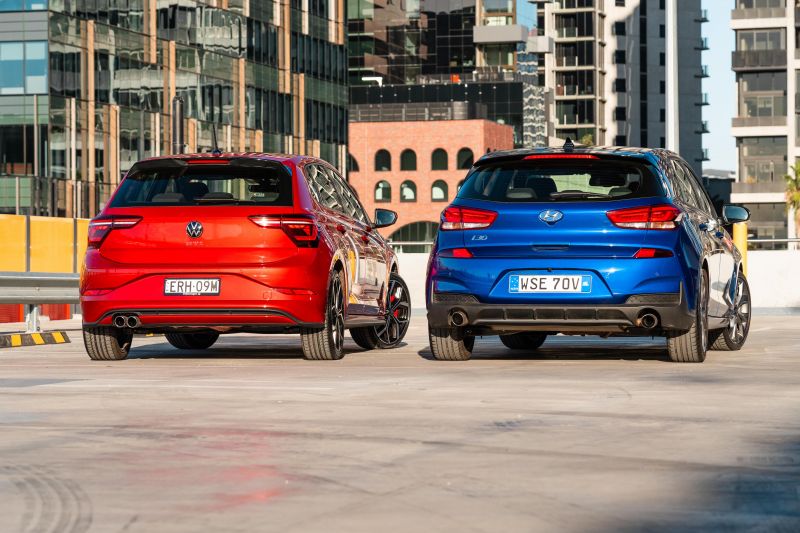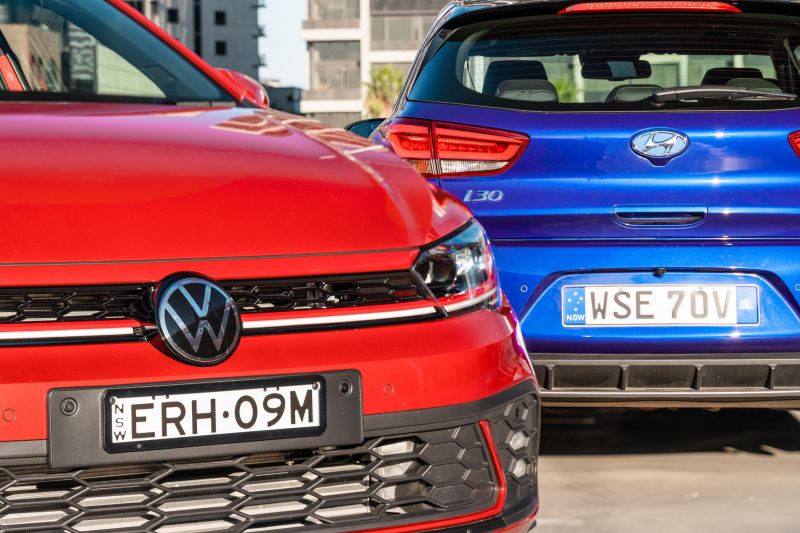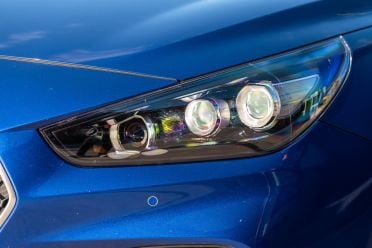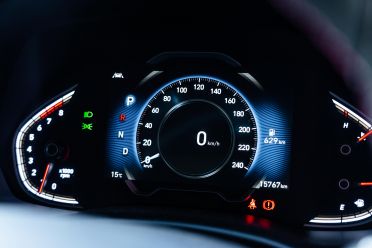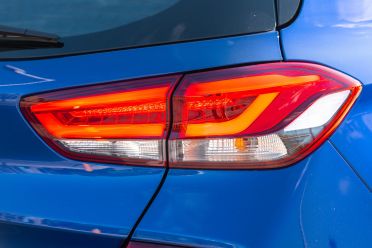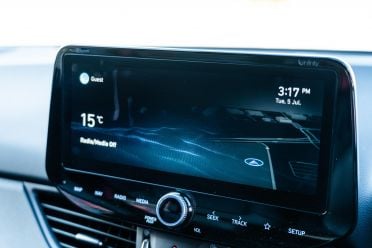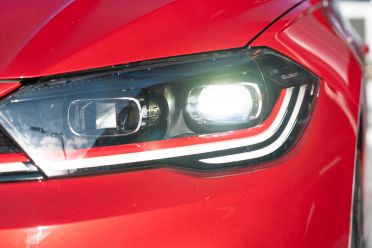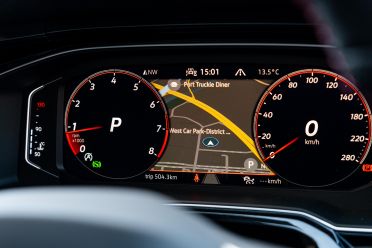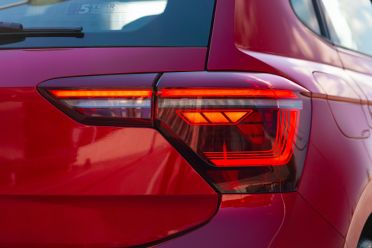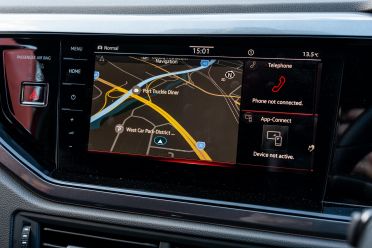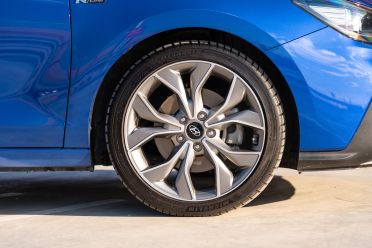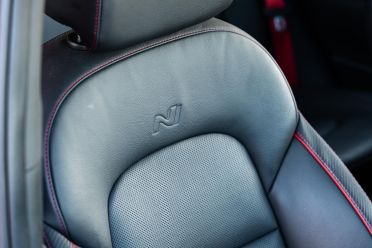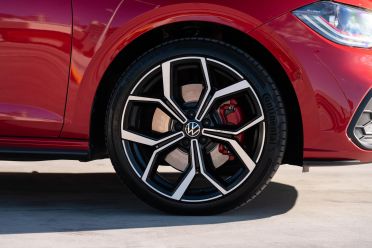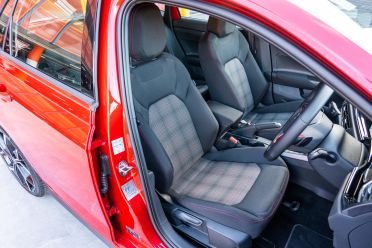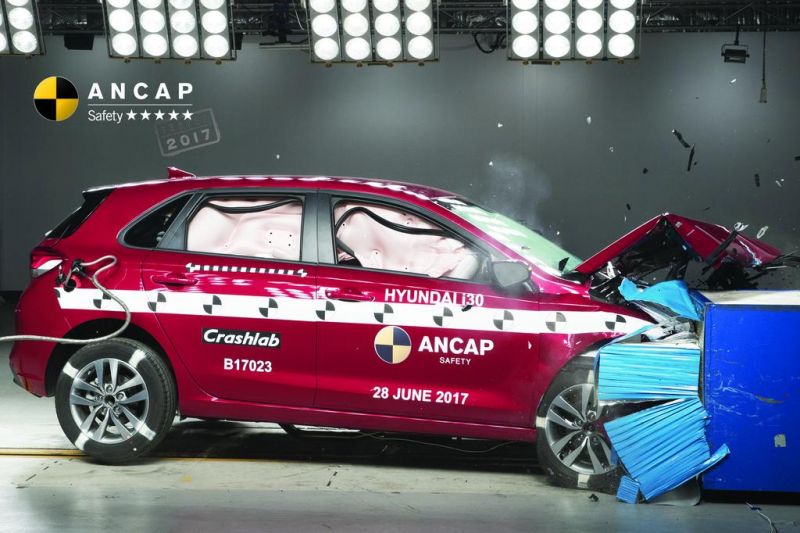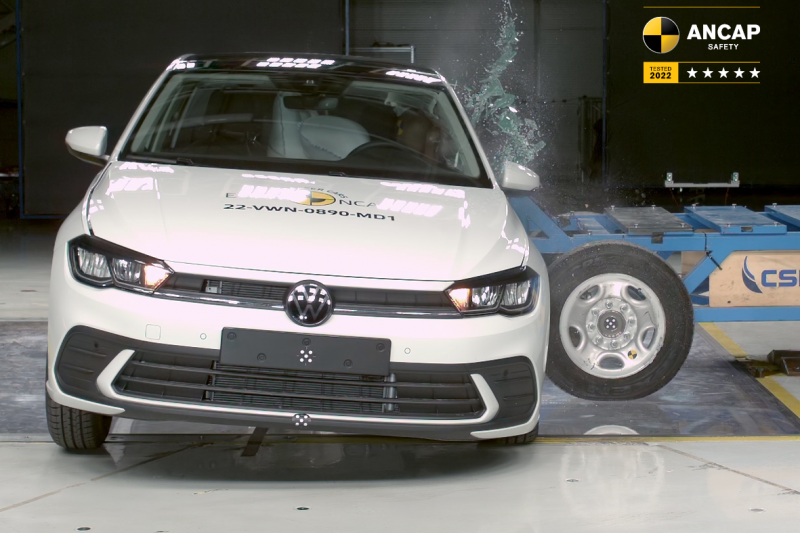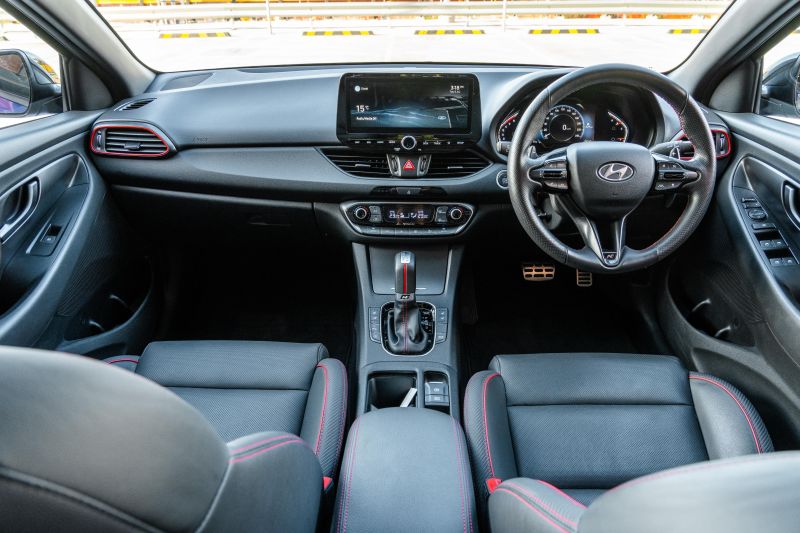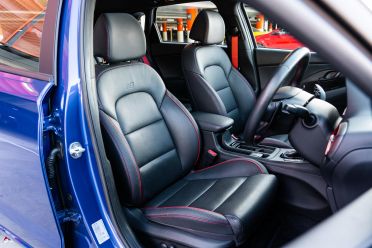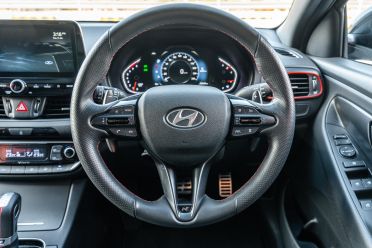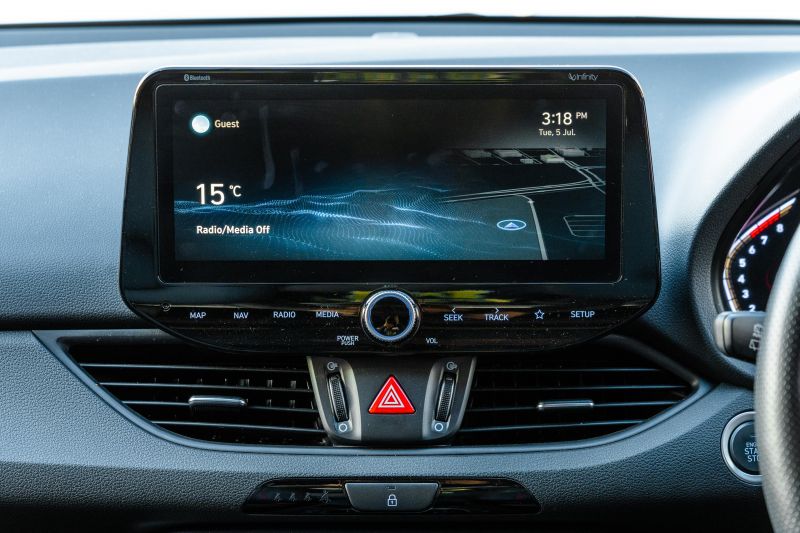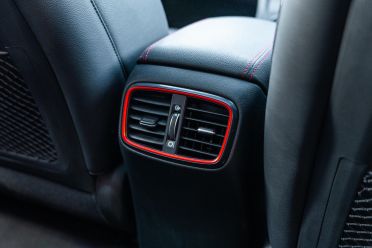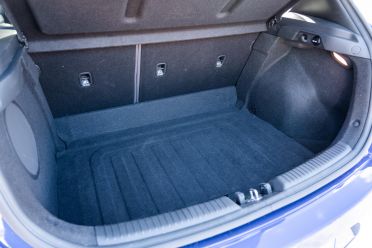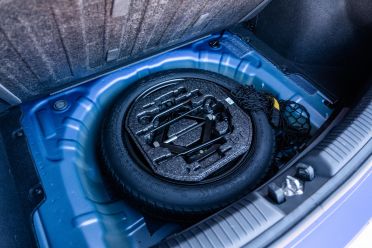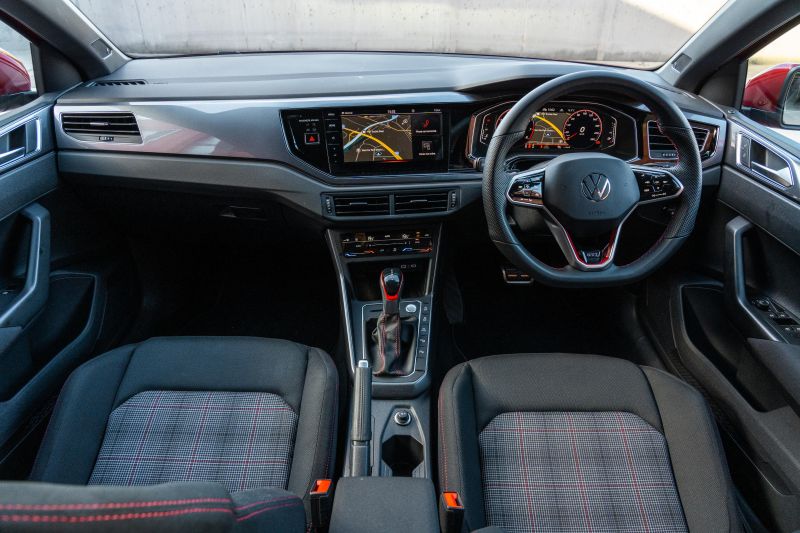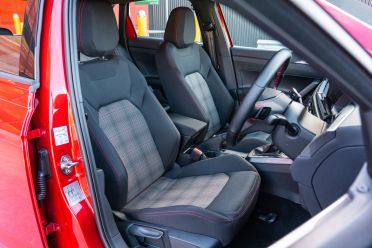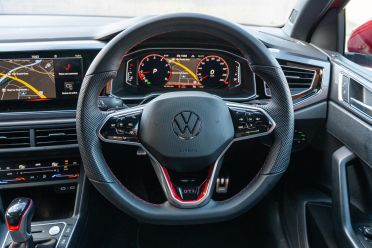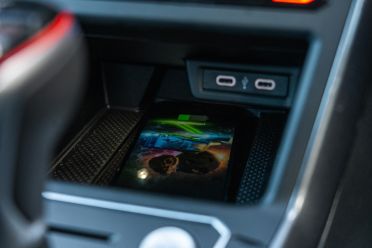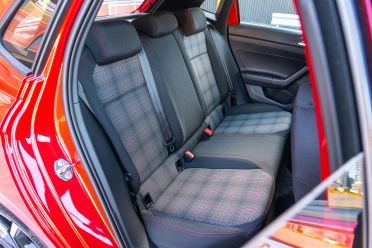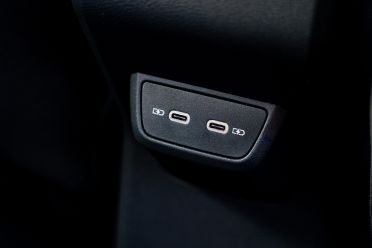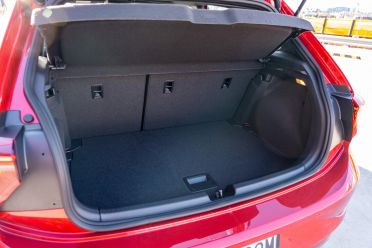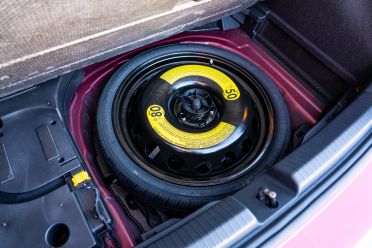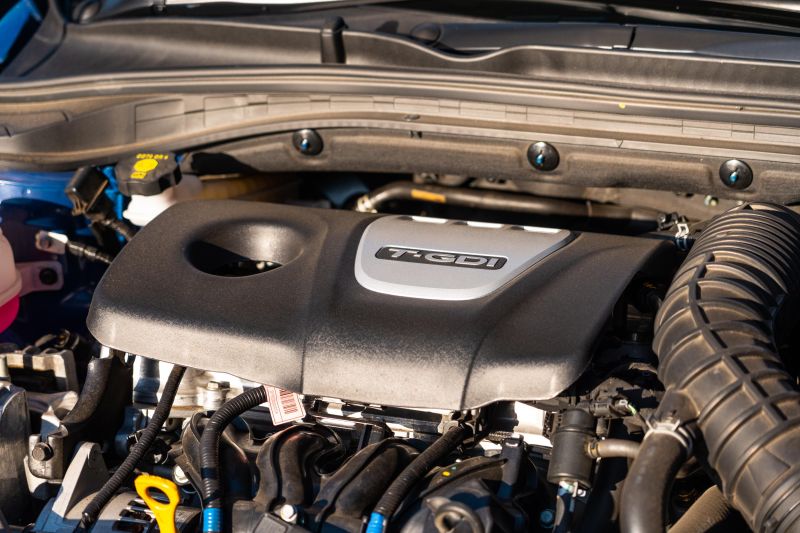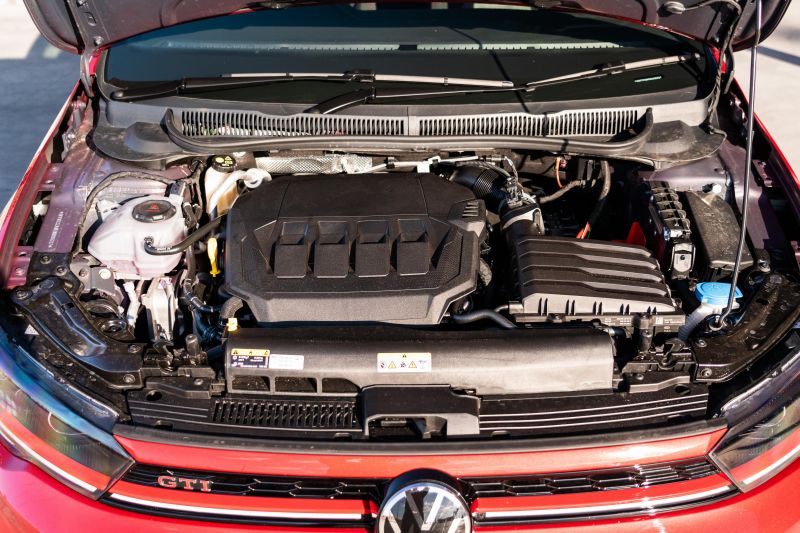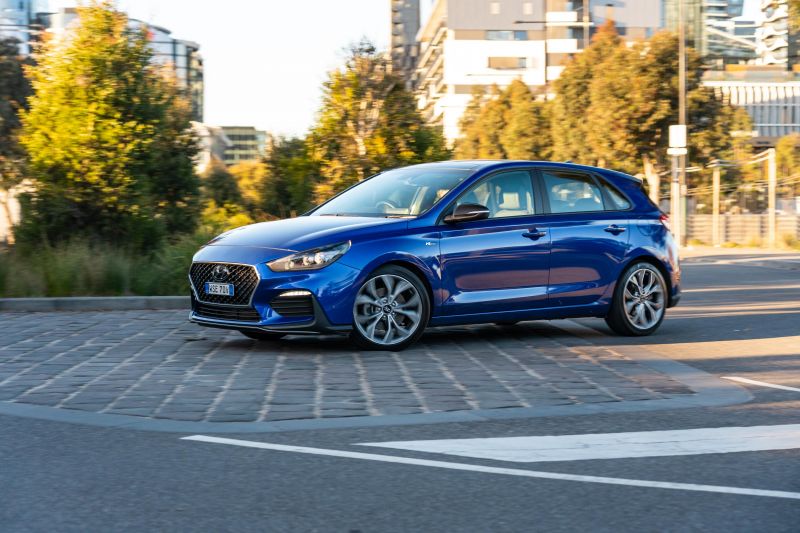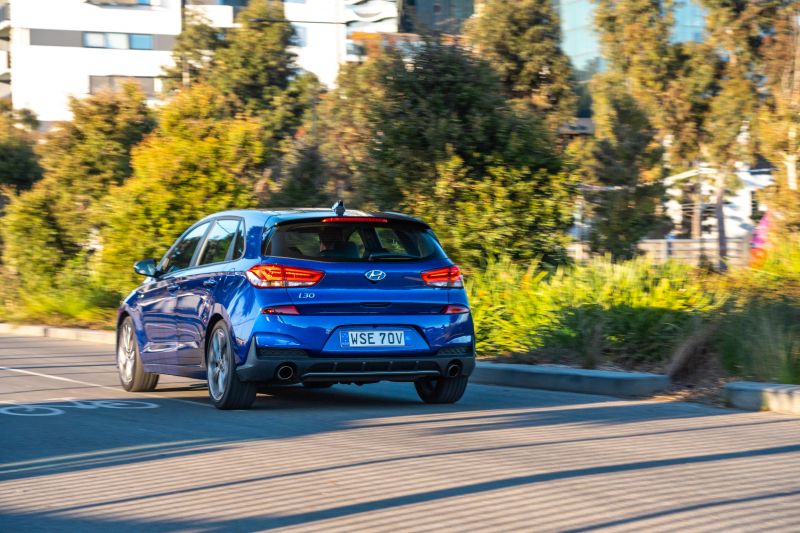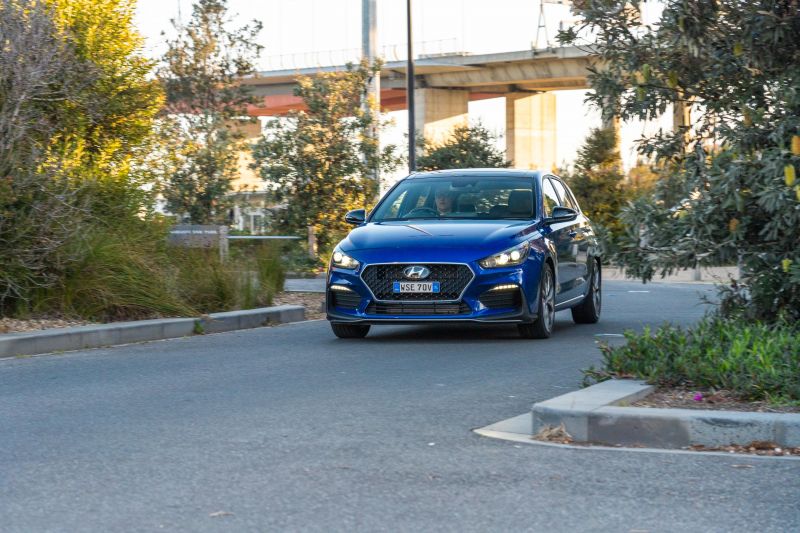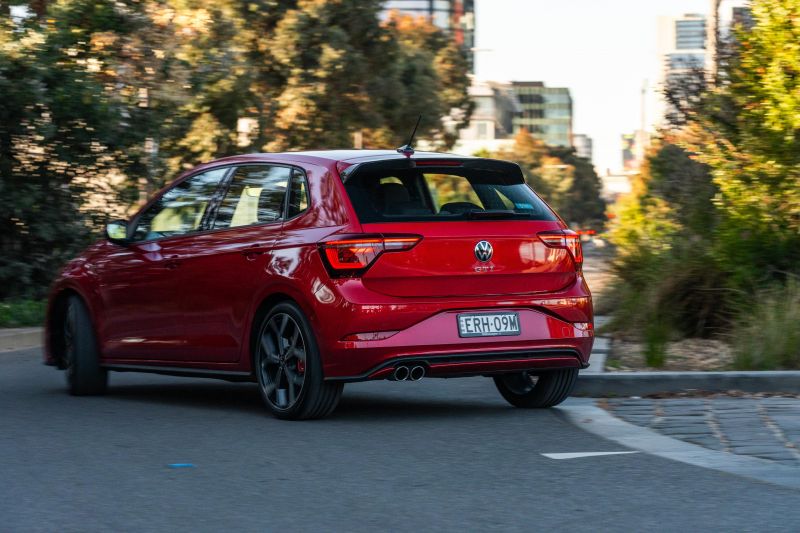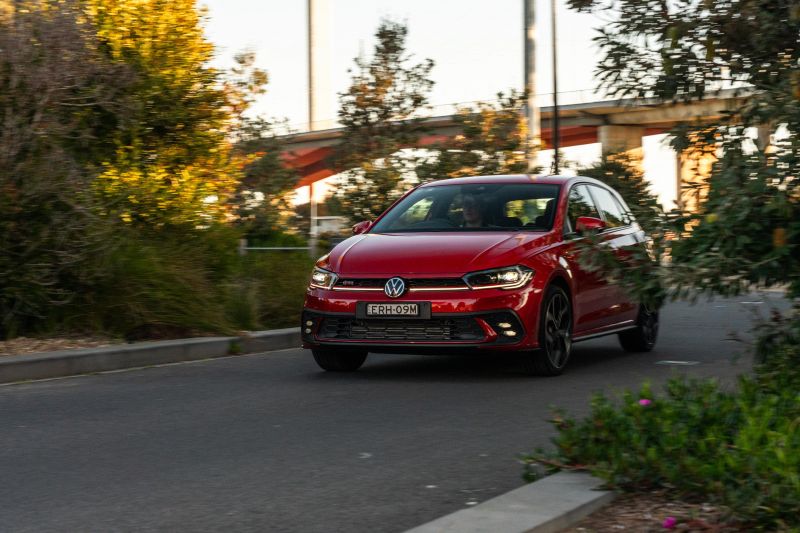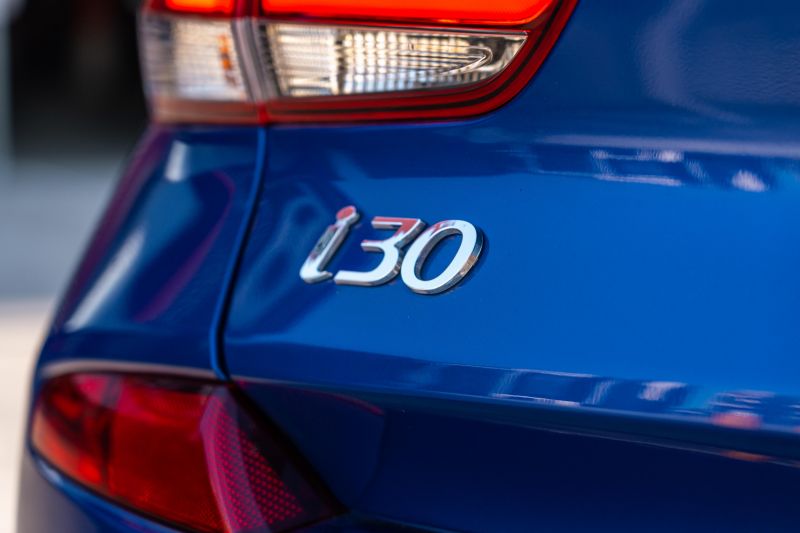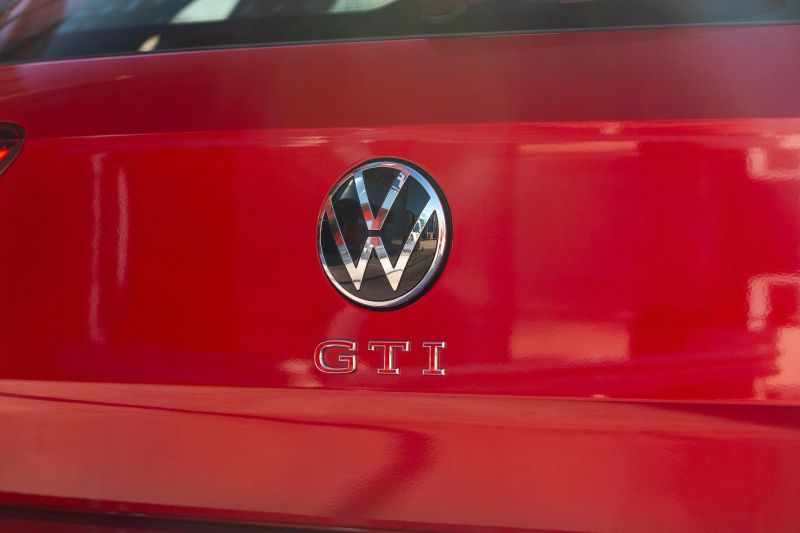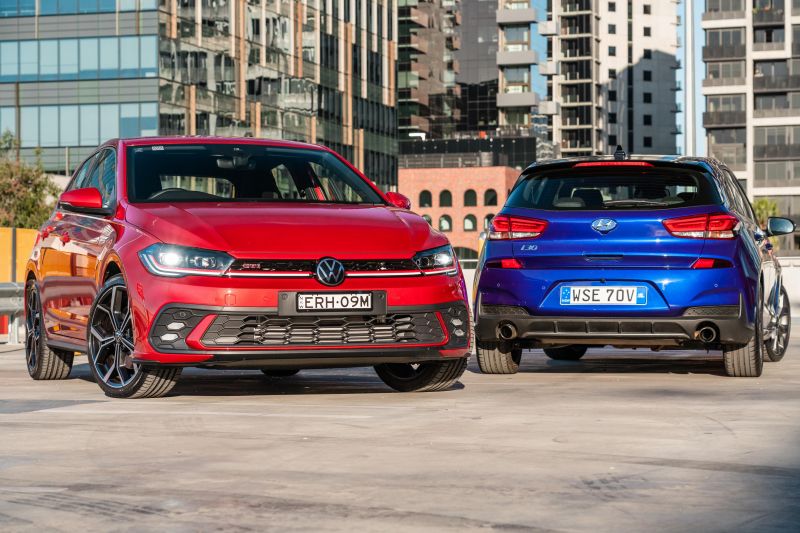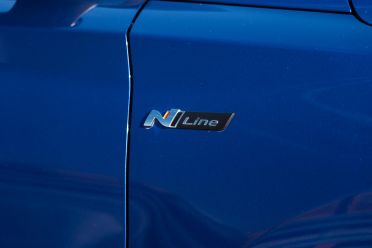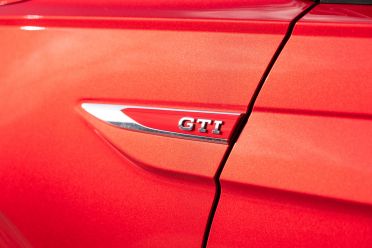Aussies love performance cars, and hot hatches generally sell very well here.
Think big names like Volkswagen Golf R, Hyundai i30 N and Honda Civic Type R. They’re just some of numerous competitors vying for the same market.
At the lower end you have junior hot hatches like the (now-axed) Ford Fiesta ST cult hero, the new Hyundai i20 N, as well as the Volkswagen Polo GTI you see here.
While its Ford and Hyundai rivals, as well as the now-defunct Renault Clio R.S. that’s no longer in production, are billed as cheap thrill seekers that focus on raw driver involvement, the Polo GTI has always been a little more of an old soul, aping its bigger Golf GTI sibling in being a jack-of-all-trades kind of buy.
The current-generation Polo in general has grown quite a bit, to the point where it almost straddles the light and small passenger segments in terms of size and practicality – so we wondered, just how grown up is it?
Hence we lined it up against a larger but less outright performance-focused potential rival in the Hyundai i30 N Line Premium.
The Korean hatchback is slightly more affordable than the German-badged Polo but in rear seat and boot space there’s not much in it, plus it has a turbocharged petrol engine making similar power driving the front wheels through a dual-clutch automatic transmission.
Further, being an N Line rather than an N, the i30 like the Polo GTI is something of an all-rounder in that it claims to offer an athletic drive but with a level of comfort dialled in that makes it usable day to day.
How much?
The more affordable of the two vehicles here is actually the Hyundai, despite being a size segment up.
Priced from $36,520 plus on-road costs with the seven-speed dual-clutch automatic as tested here, it’s over $2000 more affordable than the Volkswagen from the get go. You can get a six-speed manual version for $2000 less, too.
According to the Hyundai Australia online configurator, the i30 N Line Premium with DCT and optional Intense Blue premium paint as tested ($595), has a recommended drive-away price of $41,353 using a Melbourne postcode (3000).
The Polo GTI starts at $38,750 before on-roads, and the vehicle on test comes with the optional Sound & Tech Package which adds a further $1500 – meaning it’s over $40,000 before taxes.
With the lovely optional Kings Red premium metallic paint on our tester ($300), the Polo GTI you see here wears a drive-away price of $46,330 using a Melbourne postcode, bringing the premium over the Hyundai to around $5000 with options and on-road costs.
The i30 gets a head start on price alone, but does the Polo claw back ground in terms of inclusions?
What do you get?
i30 N Line Premium highlights:
- LED headlights
- LED tail lights
- 18-inch alloy wheels
- Michelin Pilot Sport 4 tyres
- Front and rear parking sensors
- 7.0-inch driver’s cluster display
- 10.25-inch touchscreen infotainment
- Satellite navigation with live traffic
- Apple CarPlay and Android Auto (wired)
- DAB+ radio
- Infinity 7-speaker premium audio system
- Qi wireless phone charger
- 10-way power driver’s seat
- Heated and ventilated front seats
- Electrochromatic rear-view mirror
- Dual-zone climate control
- Rear air vents
- Alloy sports pedals
- N Line exterior package
- N Line interior package
- N Line leather-appointed seats
- N Line sports steering wheel
- N Line gearshift
Polo GTI highlights:
- GTI body styling
- Metallic paint
- Anti-theft alarm system
- Keyless Access
- 18-inch alloy wheels
- Sport select suspension
- Driving Profile Selection
- 8.0-inch Discover Media navigation system
- Voice Control
- Wireless Apple CarPlay/Android Auto
- DAB radio
- Sport seats
- Tartan interior upholstery
- Sports steering wheel with paddles
- 10.25-inch Digital Cockpit Pro driver’s display
- Park Assist (auto parking)
- IQ.Light Matrix LED headlights
- Dynamic Light Assist (adaptive high-beam)
- Illuminated LED grille strip
- Premium LED tail lights with dynamic indicators
- Dual-zone climate control air conditioning
- Front Fog lights
- Interior ambient lighting
Sound & Tech Package ($1500, as tested) adds:
- 9.2-inch Discover Pro navigation system
- 300W, 6-speaker Beats premium audio
The i30 N Line features LED headlights with auto high-beam as standard, though the Polo gets high-end Matrix LED units with a proper adaptive high-beam system and an LED front light strip. It also gets full-LED tail lights with swish scrolling indicators.
Polo Style and GTI models also get blind-spot monitoring and rear cross-traffic alert as standard, where N Line versions of the i30 don’t offer it at all. The Hyundai does, however, get leather upholstery with heated/ventilated front seats which the Polo can’t match.
The Polo GTI also gets wireless Apple CarPlay and Android Auto as standard, whereas the Hyundai’s is wired only, and the Polo’s 10.25-inch Digital Cockpit Pro with configurable layouts and mapping capability is well ahead of the Hyundai’s somewhat basic 7.0-inch supervision cluster which only ever shows a digital speedometer with a configurable trip computer display in the centre.
Both vehicles come equipped with dual-zone climate control but only the Hyundai features rear air vents, while only the Polo features a semi-autonomous parking assistant (for parallel and perpendicular parks).
Are they safe?
Hyundai i30
The i30 Hatch range (excluding the N) wears a five-star ANCAP safety rating with 2017 date stamp.
Based on the old scoring system, the i30 managed an overall score of 35.01 out of 37, including a perfect 16.00 out of 16 for the side impact test and a frontal offset score of 14.01 out of 16. Further, whiplash protection was rated Good and pedestrian protection deemed Acceptable.
It’s worth noting that ANCAP’s original rating lists various features like AEB and lane-keep assist as optional items at the lower end of the i30 range, but now all models come equipped with Hyundai SmartSense tech as standard.
Standard safety features include:
- Autonomous emergency braking (AEB)
- City, Urban, Interurban speeds
- Pedestrian and Cyclist detection
- Driver attention warning
- Forward collision warning
- High Beam Assist (auto high-beam)
- Lane Following Assist
- Lane-keep assist
- Parking sensors front and rear
- Reversing camera with dynamic guidelines
- Tyre pressure monitoring
- 7 airbags incl. driver’s knee
Notably absent from i30 N Line models are blind-spot monitoring, rear cross-traffic alert and Safe Exit warning, as the bumper design of the sportier offerings hasn’t been engineered to house the required hardware.
Volkswagen Polo
Facelifted versions of the Volkswagen Polo wear a five-star ANCAP rating with 2022 date stamp.
With its updated safety suite against the latest criteria, the new Polo scored an impressive 94 per cent for adult occupant protection, 80 per cent for child occupant protection, 70 per cent for vulnerable road user protection and 70 per cent for safety assist.
Standard safety features include:
- Autonomous emergency braking (AEB)
- Pedestrian and Cyclist detection
- Lane departure warning
- Lane-keep assist
- Parking sensors front and rear
Polo Style and GTI models add:
- IQ.Light Matrix LED headlights
- Dynamic Light Assist (adaptive high-beam)
- Blind-spot monitoring
- Rear cross-traffic alert
- Park Assist
- Travel Assist
- Adaptive cruise control with Stop&Go
- Lane centring
- 7 airbags incl. front-centre airbag
What are they like inside?
Hyundai i30
The i30 Hatch dates back to 2016-17, though a recent facelift brought about some interior changes, namely that widescreen 10.25-inch display in high-spec models.
For the N Line, exterior changes are minimal but there’s more differentiation inside, with the chunky sports steering wheel and thick gearshift nicked straight out of the brand’s hi-po N range. They feel great in the hand and are trimmed in a lovely, soft perforated leather.
It’s very dark in here with pops of red from the contrast stitching and accents, and while it’s not the most contemporary cabin layout it’s got a bit of class to it. Ergonomically, it’s pretty sound too.
The driver’s seat is very comfortable and supportive, with good bolstering and a wide range of electric adjustment. Even better, they’re heated and ventilated so you’re catered for in climates like Melbourne where you can have multiple seasons in a day.
Befitting of its age, there’s no touch capacitive switchgear other than the shortcuts at the base of the display. Like we’ve come to appreciate with Hyundai and Kia products, there’s a nice solid damping to the buttons and switches and they’re all logically laid out and within easy reach.
Storage up front is pretty good too. There’s a big cubby under the centre stack that’s lidded, and houses the USB input and wireless phone charger – it’ll fit a large phone wired in for Apple CarPlay, too.
A pair of cupholders sits between the front seats, positioned next to a slot large enough to fit your keys behind the electronic park brake. The door bins are nice and deep too, with space for a larger bottle.
The i30’s 10.25-inch touchscreen is shared with almost every Hyundai and Kia model line these days it seems, but it’s still one of the better units in the mainstream segments thanks to its quick processing, high resolution and solid feature list.
Native satellite navigation, DAB radio and wired smartphone mirroring cover all bases, and in operation all work well. There’s no net-based services like you’ll start to see with some of Kia’s latest models (see Niro with Kia Connect), but the Volkswagen doesn’t offer that stuff either.
Annoyingly, the higher-grade infotainment unit deletes the wireless Apple CarPlay and Android Auto connectivity of the base i30 with its lesser 8.0-inch screen, and this is a key omission compared to the Volkswagen too.
The 7-speaker Infinity premium audio system is a solid unit with clear sound, though it may not have the depth of some rivals. It does a good job of drowning out any road noise too – we’ll get to that in the driving section.
Second row accommodation in the i30 has never been a standout for the small passenger class, to the point where the Polo it’s being lined up against almost offers the same amount of leg and kneeroom.
That said, there are inclusions like rear air vents and a fold-down centre armrest which reiterate the Hyundai’s intentions as a proper four seater by design. If you have little ones, there are ISOFIX anchors on the outboard positions as well as top-tether points across all three rear seats.
Behind a taller driver like 6’1 me, you might be a little tight for knee room, not helped by the hard plastic inserts in the seat backs. Said seat backs offer netted map pockets on both sides, however, and there are bottle holders in the doors if you need.
What the i30 lacks – again more to do with the age of its design – is a dedicated 12V power socket or USB charge ports in the rear, something that the Polo offers.
Behind the rear seats is a solid 395-litre boot, which is not only larger than the Polo GTI’s but also larger than a Golf’s.
Drop the rear seats and you have 1301 litres to play with, though unfortunately there’s no adjustable load floor to create a flat load bay – which also means there’s a pretty high lip.
N Line versions of the i30 get a temporary space-saver spare wheel rather than a full-size spare, but that still matches the Polo’s space saver.
Volkswagen Polo
Despite hailing from the segment below, the Polo has one of the most grown-up little car cabins on the market.
With this mid-life refresh, theres’s classier execution for some of the trims and materials, and a lot of features and elements borrowed from much more expensive members in the Volkswagen line-up.
It feels a lot more up to date than the Hyundai, with high-resolution displays, touch-capacitive climate controls and a swish steering wheel design all presenting well and feeling worthy of the price tag.
Ahead of the driver there’s a 10.25-inch digital instrument cluster as standard, dubbed Digital Cockpit Pro. It has numerous layouts, and can project navigation mapping and turn-by-turn prompts in addition to the usual trip computer and media readouts.
Slotted in the dashboard is an 8.0-inch touchscreen as standard, though our test car’s optional Sound & Tech Package ups the screen size to 9.2 inches, essentially the same display you’ll find in high-spec Passats and Tiguans.
Running VW’s new MIB3 infotainment interface, the Discover Pro infotainment unit offers native mapping, wireless Apple CarPlay and Android Auto, as well as DAB digital radio – no longer is the latter a glaring omission within the Volkswagen line-up.
Resolution and response times are a match if not better than the Hyundai’s system despite the smaller size, and the wireless smartphone connectivity is a big tick from a convenience and ease of use standpoint. You just hop in and go.
A fun fact about the latest VW interface is that it will now project travel time and turn-by-turn prompts into the instrument cluster if you’re using Apple Maps via Apple CarPlay, rather than switching off the native mapping altogether like previous generations – my Golf GTI, for example, defaults to a blank screen between the dials.
The Sound & Tech Package fitted to our test car also brings a 300W 6-speaker Beats premium audio system, which while down one speaker on the Hyundai’s Infinity system, goes just as hard.
Again it’s easy to forget this is Volkswagen’s entry-level passenger car in Australia, and the Beats sound system again punches above its weight with clear sound and good depth. However, turn up the bass too much and you might hear some cabin bits shake.
The manually-adjusted front sports seats are really nice to sit in. They hug you just the right amount, and being cloth have a bit more suppleness than leather – the cool Tartan insert design is a bonus.
However, they lack the heating and ventilation functions of the Hyundai’s pews.
Storage is pretty good, though. There’s a wireless phone charger under the centre stack, bolstered by two USB-C outlets if you need to juice up your device quickly.
Cupholders between the front seats, big door bins and a compartment under the front-centre armrest round out the storage amenities in the front row. Again, the Polo is a big-little car.
While rear passenger space is surprisingly good for a light-class vehicle, the Polo’s city commuter origins mean there are fewer amenities.
There are no rear air vents and no fold-down rear centre armrest, though there are two USB-C charge ports, map pockets and large door bins for big bottles.
Rounding out the rear seating features are ISOFX anchors for the outboard rear pews, as well as top-tether points across all three rear seats.
The Polo GTI’s boot measures 305L with the rear seats in place, and expands to 1079L with them folded.
While the Volkswagen is down on capacity compared to the Hyundai, it’s a nicely square space with a smartly-positioned boot floor that means there’s no awkward ‘step’ to the seatback when you fold the rear seats down.
A space-saver spare wheel lives under the boot floor, unlike the full-size steel spare in standard Polo variants.
What’s under the bonnet?
Hyundai i30
Power in i30 N Line models comes from a 1.6-litre T-GDi turbocharged four-cylinder petrol engine, outputting 150kW (6000rpm) and 265Nm (1500-4500rpm).
Our test car sends drive to the front wheels via a seven-speed dual-clutch automatic transmission, though a six-speed manual is also available in Australia.
The Hyundai has more power than the Polo but less torque, while also featuring one extra cog in its transmission.
Fuel use is rated at 7.1L/100km, and the Hyundai’s fuel tank measures 50 litres. It can run on cheaper 91 RON unleaded.
Volkswagen Polo
The Polo GTI’s 2.0-litre TSI turbo four shares its DNA with the unit used in the larger Golf GTI and Golf R, and a slew of other Volkswagen Group models.
In this application, the EA888 motor produces 147kW (6000rpm) and 320Nm (1450-4390rpm), sent to the front wheels via a six-speed DSG dual-clutch auto. The Polo also features an electronic front differential, which allows torque vectoring via braking.
Volkswagen claims the Polo GTI will dash from 0-100 in 6.8 seconds. Fuel use, meanwhile, is rated at 6.5L/100km.
Australia only gets the six-speed DSG, but Europe offers a slightly more powerful version of this engine with a seven-speed DSG. Hmph.
The Polo’s fuel tank capacity is rated at 40 litres, and it requires 95 RON premium unleaded as a minimum.
How do they drive?
Hyundai i30
It may be getting on a bit, but there’s still plenty to like about how the i30 drives, especially in N Line guise.
Right off the bat you notice the Hyundai’s effortless punch courtesy of all 265Nm being available from just 1500rpm, and in normal driving the seven-speed DCT is a pretty agreeable unit.
There’s a subtle growl from the exhaust as you accelerate, and the driver controls balance comfort and engagement quite well.
Once you turn the dial up a bit, the i30 N Line demonstrates dynamic prowess but with a level of everyday comfort in mind. Remember, this is an N Line not an N.
The locally-tuned suspension and more sophisticated independent rear axle have a suppleness that irons out the lumps and bumps in the city as well as higher-speed country roads, and body control strikes a similar balance of comfort and sportiness.
Flinging the i30 through some twisty mountain roads after hopping out of the Polo was a stark contrast. There’s less exhaust sound, less road surface feel but just as much performance and grip.
If anything, the Hyundai felt more confident and quicker scaling the windy Victorian Hills out past Healesville, with its softer suspension and grippy Michelin Pilot Sport tyres inspiring confidence over the often undulating and pimpled tarmac of the region’s B-roads.
The fluid, direct steering and confident grip levels meant you could turn in and accelerate out of corners with better traction and pace than the Polo GTI on test, with the i30’s torque deficit appearing to work in its favour as it could get its power down easier. On a couple of occasions the Hyundai was able to accelerate away from the VW under hard throttle.
I will lament, however, that the i30 N Line’s instrument cluster and quite muted engine note meant that it’s often hard to gauge when to shift if you’re using the paddles in manual mode.
The sideways-turned tacho doesn’t give you the best view of the engine’s revs, and you can’t really hear the engine until it’s at about 5000 or 6000rpm. Colleague Scott Collie and myself both noted we hit the rev limiter a couple of times during our spirited stints.
It’s certainly behind the Polo in this regard, with little theatre and dulled engagement when you’re really pushing it, as well as the frustrating instrument cluster arrangement. Hyundai’s DCT isn’t as sharp or intuitive as Volkswagen’s DSG, either.
On the return transit portion of the drive loop, the Hyundai won us back with its superior comfort and road noise suppression over the smaller Volkswagen, though the inferior driver assistance suite is worth noting, namely the lack of blind-spot monitoring, considering the Polo packs luxury levels of kit in this area worthy of a much more expensive vehicle.
Volkswagen Polo
If you’re looking for a more hardcore vibe, the Polo punches well above its weight.
Volkswagen GTI models are often criticised for not being as overt as rivals from Ford and Hyundai, but the latest Polo GTI packs in stacks of fun and has a rebel character that came as quite a surprise as an existing Golf GTI owner.
Push the shiny starter button and the Polo fires to life with a brassy burble, instantly bringing a smile to your face.
It doesn’t stop there either. Having 320Nm in such a little car from just 1450rpm means the Polo feels incredibly responsive and eager to get moving, and that distinct engine note means there’s a bit of theatre regardless of the speed.
The Polo GTI fits adjustable damping as standard, meaning you can have it in Comfort for more supple daily driving and then dial it up to Sport when you want to have a bit more fun.
Regardless of the drive mode selected, the Polo feels more responsive, more connected and more visceral than the Hyundai. It certainly ignites the senses a lot more, more often.
Stomp on it and the Polo gets up and about with impressive pace, not feeling far off its larger Golf GTI sibling in terms of acceleration, reflected by the minimal 0.6s difference in 0-100 times.
The gap between the Polo and larger hot hatches in terms of performance is probably minimised further due to the fact this is a smaller car, feeling lighter on its feet and more eager to throw itself in and out of corners than a larger, heavier alternative.
It’s noticeably firmer than the Hyundai, however, which will appeal to those wanting a more engaging and pure everyday drive experience but it’s also far from uncomfortable. In fact, those cloth-trimmed sports seats up front are arguably more comfortable and supportive than the i30’s both in normal driving and when having a crack.
On our spirited mountain run, the Polo was more fun to punt through successive bends and take manual control in. Again that more raucous soundtrack as well as the more direct controls and feel gave a better idea of what the car was doing at any given point.
You can feel it scrabbling for traction under hard throttle, the firmer suspension really communicates the imperfections of the asphalt underneath, and the brassy soundtrack and pops on upshifts really come together to make for quite a fun and engaging hot hatch experience.
However, the Polo’s taut setup meant it could get quite busy and at times nervous on some of the higher-speed B-roads we drove on, requiring more measured throttle inputs and a bit more effort to keep it on the straight and narrow.
The torsion beam rear suspension is likewise not as secure as the Hyundai’s multilink rear in spirited driving – though it adds to the fun and drama, depending on how how you look at it.
The firmer setup and higher levels of cabin noise; both in terms of engine and road noise, means the Polo isn’t quite as relaxing to drive on longer stints either.
With that said, the excellent suite of assistance features and semi-autonomous driving capability means the Polo has a more sophisticated technology set than the Hyundai, a huge plus for someone like me that enjoys the convenience of letting the vehicle do most of the work on the highway.
Cost of ownership
Hyundai i30
The i30 N Line is backed by a five-year, unlimited-kilometre warranty with 12 months of complementary roadside assistance included with purchase, the latter extendable to up to nine years if you service within the Hyundai network.
Hyundai offers lifetime capped-price servicing as well as upfront service plans for up to the first five years of ownership.
For i30 N Line models with the 1.6-litre turbo, scheduled maintenance is required every 12 months or 10,000 kilometres – whichever comes first. A five-year service plan (up to 50,000km), is available for $1495 upfront.
In terms of fuel consumption we saw high sixes following our extended test loop, which included city driving, a spirited run through the hills, and an extended highway leg.
Volkswagen Polo
Like Hyundai, Volkswagen covers the Polo GTI and its wider range with a five-year, unlimited-kilometre warranty.
Additionally, 12 months of roadside assistance is included with purchase, and can be extended annually up to nine years provided you service your vehicle with an authorised Volkswagen dealer.
The Polo offers longer service intervals than the Hyundai – 12 months or 15,000 kilometres – however, Volkswagen’s service plans are substantially more expensive.
Buying an upfront Care Plan for five years will cost you $2750, almost double what the i30’s package costs, however that will last you for up to 75,000km.
Like the Hyundai the Polo proved to be quite efficient, settling into the mid sixes following our mixed drive loop.
CarExpert’s Pick
This was a really tough one to call.
On one hand the Polo GTI is the better ‘hot’ hatch. It’s sharper, louder, and has a bit of theatre about how it performs. Usually Volkswagens are the more civilised options in these kinds of match-ups, but not here.
Add to that its impressive tech and feature suite (albeit when fully optioned) which sees items from much more expensive vehicles fitted to the brand’s entry-level offering in Australia.
Matrix LED headlights, more sophisticated assistance tech and an excellent infotainment interface are key highlights.
Meanwhile, the Hyundai offers better value for money, better comfort and refinement, and is able to get its power down better as its turbocharged engine doesn’t overwhelm the front tyres with torque as often. It’s a great all-round GT, if you will.
Ultimately, what will decide which of these is the better pick for you is what you value or prioritise most. If you’re happy to pay a premium for a more visceral experience and the best available tech, the Polo GTI is a clear winner here.
Alternatively, should you want a bit more of an all-rounder more in line with what you’d expect of, perhaps, a Golf GTI, the Hyundai i30 N Line Premium is the more mature, comfortable and practical offering with competitive straight-line performance.
For me the Polo GTI is the better performance car and my personal preference, though the Hyundai is the more mature and refined all-rounder, and fares slightly better against our overall scoring criteria.
Click the images for the full gallery
MORE: Everything Hyundai i30
MORE: Everything Volkswagen Polo





